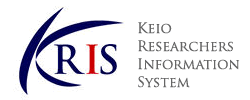-
Affiliation
-
Faculty of Science and Technology, Department of Biosciences and Informatics (Yagami)
-
Position
-
Associate Professor

KEIO RESEARCHERS INFORMATION SYSTEM |
Details of a Researcher
このページはJavascriptを使用しています。すべての機能を使用するためにはJavascript を有効にする必要があります。
Fukunaga, Tsukasa
|
|
|
シーケンス技術の進歩により、膨大な塩基配列データが次々と決定されています。しかし、それら塩基配列データが秘める「生命情報」の全貌は、その多くが謎に包まれたままです。 これらの未解明な生命情報を解き明かすには、大規模なデータを高速に処理するアルゴリズムや、機械学習に代表される高度なデータ解析手法の開発が不可欠です。また、それらの手法で得られた視点を基盤に、新たな生命科学を進めていく必要もあります。福永研究室では、RNA構造解析・遺伝子機能推定・ゲノム配列解析といったテーマを中心に、ソフトウェア開発からウェットラボ実験まで、 多角的なアプローチで研究を進めています。
日本学術振興会, 特別研究員(PD)
Waseda University, Faculty of Science and Engineering, 特別研究員
Waseda University, Research Institute for Science and Engineering, 招聘研究員
The University of Tokyo, 情報理工学系研究科コンピュータ科学専攻, 助教
Osaka University, 医学系研究科, 招聘研究員
The University of Tokyo, Faculty of Science, Undergraduate Program for Bioinformatics and Systems Biology
東京大学大学院, 新領域創成科学研究科, メディカル情報生命専攻
博士(科学), The University of Tokyo, Coursework, 2016.03
Bioinformatics for Understanding Animal Behavior
Life Science / Genome biology
Life Science / System genome science
Informatics / Life, health and medical informatics
RNA二次構造
ゲノム進化
シアノバクテリア
データマイニング
バイオインフォマティクス
バイオインフォマティクスのための生命科学入門 (バイオインフォマティクスシリーズ 1)
福永 津嵩(著), 岩切 淳一(著), 浜田 道昭(監修), コロナ社, 2022.07, Page: 191
REPrise: de novo interspersed repeat detection using inexact seeding.
Atsushi Takeda, Daisuke Nonaka, Yuta Imazu, Tsukasa Fukunaga, Michiaki Hamada
Mobile DNA 16 ( 1 ) 16 - 16 2025.04
Phylogenetic Profiling Analysis of the Phycobilisome Revealed a Novel State-Transition Regulator Gene in Synechocystis sp. PCC 6803.
Tsukasa Fukunaga, Takako Ogawa, Wataru Iwasaki, Kintake Sonoike
Plant & cell physiology 2024.07
Lead author, Accepted
DeepRaccess: high-speed RNA accessibility prediction using deep learning
Kaisei Hara, Natsuki Iwano, Tsukasa Fukunaga, Michiaki Hamada
Frontiers in Bioinformatics (Frontiers Media SA) 3 2023.10
Corresponding author, Accepted
Motoyo Maruyama, Atsushi Sakai, Tsukasa Fukunaga, Yoshitaka Miyagawa, Takashi Okada, Michiaki Hamada, Hidenori Suzuki
Frontiers in Immunology (Frontiers Media SA) 14 2023.08
Accepted
Fast RNA-RNA Interaction Prediction Methods for Interaction Analysis of Transcriptome-Scale Large Datasets
Tsukasa Fukunaga, Michiaki Hamada
Methods in molecular biology (Clifton, N.J.) 2586 163 - 173 2023
Lead author
深層学習を用いたRNA二次構造情報解析の高速化
日本学術振興会, 科学研究費助成事業, 若手研究, No Setting
大規模メタゲノムデータを用いた高精度機能未知遺伝子推定手法の開発
日本学術振興会, 科学研究費助成事業 新学術領域研究(研究領域提案型), 新学術領域研究(研究領域提案型), No Setting
リピート要素のde novo発見に基づく長鎖ノンコーディングRNAの機能の解明
日本学術振興会, 科学研究費助成事業 基盤研究(A), 基盤研究(A), No Setting
逆イジングモデル法に基づく機能未知な微生物遺伝子の機能推定
Japan Society for the Promotion of Science, Grants-in-Aid for Scientific Research Grant-in-Aid for Scientific Research on Innovative Areas (Research in a proposed research area), Grant-in-Aid for Scientific Research on Innovative Areas (Research in a proposed research area), No Setting
統計的論理関係解析法に基づく機能未知遺伝子の機能推定
Japan Society for the Promotion of Science, Grants-in-Aid for Scientific Research Grant-in-Aid for Early-Career Scientists, Grant-in-Aid for Early-Career Scientists, No Setting
優秀プレゼンテーション賞
2024.11, 情報処理学会第80回バイオ情報学研究会, CapR-G4:G4構造を考慮したRNA二次構造の構造プロファイル計算
Oxford journals-JSBi Prize
2024.08, 日本バイオインフォマティクス学会, Function estimation of the function-unknown genes through RNA structural analysis and comparative genomic analysis
優秀口頭発表賞
福永津嵩, 岩崎渉, 2021, 第十回生命医薬情報学連合大会, The inverse Potts model improves accuracy of phylogenetic profiling
ポスター賞
毛利公一, 尾崎遼, 福永津嵩, 2020, 第九回生命医薬情報学連合大会, 統計的有意性を担保可能な系列パターンマイニングに基づく配列モチーフ検出ソフトウェアの開発
ポスター賞
福永津嵩, 浜田道昭, 2016, 第五回生命医薬情報学連合大会, RIblast: A high-speed RNA-RNA interaction prediction system for comprehensive lncRNA interactome analysis.
TOPICS IN BIOSCIENCES AND INFORMATICS 1
2025
SEMINAR IN BIOSCIENCES AND INFORMATICS
2025
INTRODUCTION TO BIOLOGY TODAY
2025
INTRODUCTION TO ALGORITHMS
2025
INDEPENDENT STUDY ON FUNDAMENTAL SCIENCE AND TECHNOLOGY
2025
編集委員, IPSJ Transactions on Bioinformatics
理事, 日本バイオインフォマティクス学会
幹事, 日本バイオインフォマティクス学会
Review Editor, Frontiers in Bioinformatics
バイオ情報学研究会運営委員, 情報処理学会